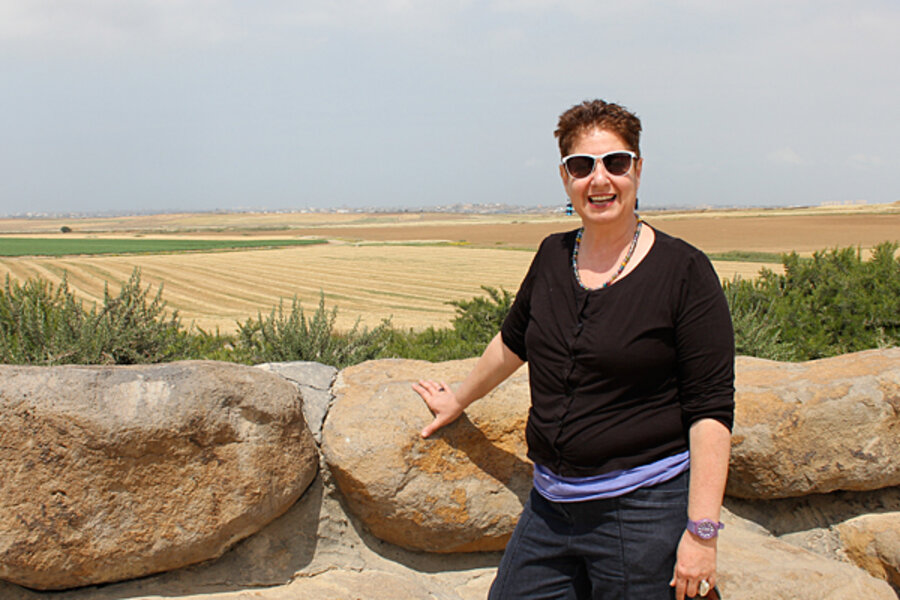Israeli first responder searches for the good among Sderot's rocket-pocked streets
Loading...
| Sderot, Israel
Judith Bar-Hay works on the frontlines of one of the most battered areas of Israel: Sderot, a blue-collar town that has been hit with more than 7,000 rockets from Palestinian militants in nearby Gaza over the past decade.
So when Ms. Bar-Hay, who works with Israel's Trauma Center for Victims of Terror and War, known as NATAL, offered to give me a tour of the town, I was expecting somber tales.
Instead, I was met by a spunky lady with spiky hair and funky jewelry outside Sderot’s hip cinematheque where, for $9, residents can choose from “The good, the bad, and the ugly,” an array of French films, and the latest Israeli flicks.
Bar-Hay’s tour of Sderot featured more of the good than the bad and ugly. She was determined to show that there is much more to this community than pockmarked buildings and kids with post-traumatic stress disorder (PTSD).
To be sure, there are both of those in this town of 20,000, as well as memorials to the roughly two dozen Israelis killed by rockets – about half of them residents of Sderot. One memorial takes the form of a community meeting place built by the parents of a girl who saved her brother’s life by shielding him with her body.
“I think they did a beautiful thing to remember her, because it continues life,” says Bar-Hay. “This is very unique to the way Israel copes with tragic death.”
We visit Sderot's Sapir College, which has more than doubled enrollment since the rockets began, and drive down vibrant boulevards, which are punctuated by artwork fashioned from Qassam rockets.
Bar-Hay, who lives on a nearby kibbutz and is a veteran member of NATAL’s community department, knows the routes well. Her work as the coordinator of NATAL's mobile unit and a first responder in emergencies takes her to everyone from schoolchildren who have lost a fellow student to an elderly grandmother who was too scared to leave her front porch for a week, since only from there could she see the public bomb shelter that she would need to reach within 15 seconds when the rocket alarm went off.
“I think this is my coping – my helping others,” she says. “If I have to go home, I think I will go crazy.”
Things have been quieter in recent months. She takes me to a picnic area on the edge of the city with a clear view of Gaza’s skyscrapers, which was filled with locals on Israeli independence day in mid-April. As the smell of freshly cut hay wafts through the pines, she sounds almost wistful about the severing of relations between Israel and the Gaza Strip. Until 2005, Israeli citizens were free to live and shop there.
“If I want a good dentist, a good mechanic, the people in Gaza are the best,” she says, noting that many Gazans also used to cross into Israel, many for work. “I think, and a lot of people think, that everybody lose in this war because the people of Gaza want the connection with us.”







